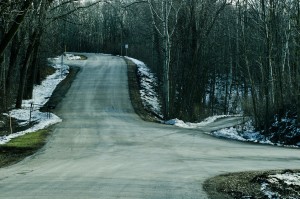
How many times have you been there, sitting on the fence unable to make a decision about something? I have wasted countless days, months and sometimes years in the throws of making a decision. Haven’t you? The question you must ask yourself is, not knowing the eventual outcome of the decision either way, what difference does it make?
The idiom “sitting on the fence” as it pertains to decision making deservces some explanation. I mean, what does sitting or not sitting on a fence have to do with anything, especially decision making.
The term came into wide general use in 1828 but was probably being used even before then. There is the simple literal definition – “A man sitting on the top of a fence, can jump down on either side with equal facility.” [Bartlett, “Dictionary of Americanisms,” 1848]. ~ Online Etymology Dictionary.
Then there is this particular story behind the idiom. Carl Schurz (1829-1906), insisting on political independence, described his position (according to James Blaine) ‘as that of a man sitting on a fence, with clean boots, watching carefully which way he may leap to keep out of the mud.’ From “Safire’s New Political Dictionary” by William Safire (Random House, New York, 1993).
In either context, fence sitting marks indecision or a lack of decisiveness. If presented with all the known facts, with the expectation of no other facts being presented, why do we sometimes balk at making a call? There are many reasons.
- We hope in time more facts will present which will allow us to make a clearer, more informed decision.
- Fear of making a mistake.
- A dreadful fear of change.
- Procrastination – forestalling due to the anxiety over the fear of making a decision.
- Hoping someone will volunteer to make the decision for us.
- Ambivalence over the decision to be made.
- Attempting to make a decision based on how others feel rather than on our own convictions.
There are of course a host of strategies for dealing with each and every one of these pitfalls. Just know this, indecision is almost never about making the correct choice. Rather, it is about being blocked from taking action.
Life, as we know and understand it, doesn’t come with an instructional manual. Sitting on the fence may provide some temporary comfort but in the long run can create more difficulties than it alleviates. Yet, clearly decisions which will affect your life need to be made every day.
Decisions are easy for everyone when the pathway ahead is obvious and clear. They are the most difficult when the pathway ahead is dark and all choices seem hopeless or impossible. Indecision then becomes a mechanism to avoid the choice between two negative alternatives or between two relatively equal courses of action.
Leaders are not fence sitters. They are typically very decisive but not because the see the entire road ahead or can somehow see into the future. They possess no crystal ball. The are decisive because they know decisions must be made to move an organization forward and stalling is not an option.
From a personal standpoint, do you find yourself straddling the fence too often? If so, consider this which may help.
The next time you are faced with a weighty decision and find you are having difficulty choosing a course of action, try to focus less on whether or not you make the right decision. You probably already know in your gut what you should do. Focus more on the ramifications of inaction because they are usually more profound than the consequences of making a bad call.
great advice, especially the part about INACTION.
Thank you so much, Samuel! I appreciate your comment.
Clark